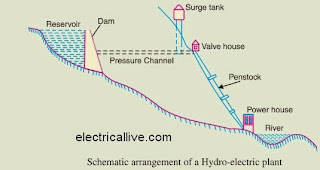[1] Define the term synchronous speed [Dec-2003]
For synchronous machines there exists a fixed relationship between number of poles P, frequency (f) and the speed of the machine. The speed of the synchronous machine for the given number of poles and the rated frequency is called the synchronous speed mentioned as NS.
[2] Write an expression for synchronous speed (Dec-2004)
An expression for synchronous speed is NS = 120f/P.
Where
f = frequency
P = No of poles of the machine.
[3] What does speed voltage mean? (Dec-2007)
When the magnetic flux is constant as well as stationary and the coil rotates to cut the flux then EMF gets induced due to relative speed between flux and coil. This EMF is called speed EMF, rotational EMF or dynamically induced EMF.
[4] Mention the factors on which hysteresis loss depends (Dec-2008)
The hysteresis loss is directly proportional to the area under the hysteresis curve ie area of the hysteresis loop.
It is directly proportional to frequency ie number of cycles of magnetization per second.
It is directly proportional to volume of the material.
[5] Distinguish between statically induced and dynamically induced EMF (Dec - 2010, 2011, 2009)
How is EMF induced dynamically ( May-2010)
An induced EMF which is due to physical movement of coil, conductor with respect to flux or movement of magnet with respect to stationary coil, conductor is called dynamically induced EMF or motional induced EMF.
The change in flux lines with respect to coil can be achieved without physically moving the coil or the magnet. Such induced emf in a coil which is without physical movement of coil or a magnet is called statically induced EMF.
[6] Define torque (May-2010)
A turning or a twisting force about an axis is called as torque.
[8] What are the three types of basic rotating electric machines? (May-2011)
DC machines
Induction Machines
Synchronous Machines
[9] What are the causes of core loss? what are the components of core loss?
When a core is subjected to an alternating flux then it undergoes the cycles of magnetisation and demagnetisation. This produces hysteresis effect which causes hysteresis loss in the core.
Similarly core is under the influence of the changing flux and under such condition according to the Faraday's law of electromagnetic induction, EMF gets induced in the core. Such currents in the core which are due to induced emf in the core are called as eddy current loss. Thus eddy current and hysteresis are the two components of the core loss.
For synchronous machines there exists a fixed relationship between number of poles P, frequency (f) and the speed of the machine. The speed of the synchronous machine for the given number of poles and the rated frequency is called the synchronous speed mentioned as NS.
[2] Write an expression for synchronous speed (Dec-2004)
An expression for synchronous speed is NS = 120f/P.
Where
f = frequency
P = No of poles of the machine.
[3] What does speed voltage mean? (Dec-2007)
When the magnetic flux is constant as well as stationary and the coil rotates to cut the flux then EMF gets induced due to relative speed between flux and coil. This EMF is called speed EMF, rotational EMF or dynamically induced EMF.
[4] Mention the factors on which hysteresis loss depends (Dec-2008)
The hysteresis loss is directly proportional to the area under the hysteresis curve ie area of the hysteresis loop.
It is directly proportional to frequency ie number of cycles of magnetization per second.
It is directly proportional to volume of the material.
[5] Distinguish between statically induced and dynamically induced EMF (Dec - 2010, 2011, 2009)
How is EMF induced dynamically ( May-2010)
An induced EMF which is due to physical movement of coil, conductor with respect to flux or movement of magnet with respect to stationary coil, conductor is called dynamically induced EMF or motional induced EMF.
The change in flux lines with respect to coil can be achieved without physically moving the coil or the magnet. Such induced emf in a coil which is without physical movement of coil or a magnet is called statically induced EMF.
[6] Define torque (May-2010)
A turning or a twisting force about an axis is called as torque.
[8] What are the three types of basic rotating electric machines? (May-2011)
DC machines
Induction Machines
Synchronous Machines
[9] What are the causes of core loss? what are the components of core loss?
When a core is subjected to an alternating flux then it undergoes the cycles of magnetisation and demagnetisation. This produces hysteresis effect which causes hysteresis loss in the core.
Similarly core is under the influence of the changing flux and under such condition according to the Faraday's law of electromagnetic induction, EMF gets induced in the core. Such currents in the core which are due to induced emf in the core are called as eddy current loss. Thus eddy current and hysteresis are the two components of the core loss.











